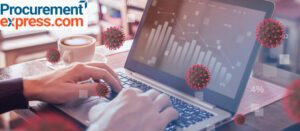
A failed marketing campaign is a beautiful thing. It may rip your heart out and stomp all over your ego, but it, more than any other, marks progress. Most small companies can’t handle the failure. Discovering a new method of acquiring customers is just too costly. Investing time and money into something that yields no return is not sustainable. Thus the term “marketing campaign” conjures up images of board room tables, sharp suits, big brands and big biz.
Any business that wants to grow, be it from start-up to profitable enterprise or from national player to global conglomerate, will need to get to grips with applying and learning from the mistakes it makes in its marketing.
So how can you do that while keeping your nerve as the money ebbs out of your budget?
Here is one way.
Accept Failure As Inevitable
No single marketing campaign will achieve success. A single campaign can however bring down your own career or possibly your entire business. Much like a stock broker, the aim is to limit losses and double down on successes. First, accept that your campaigns will fail, especially when it comes to newer markets. It takes time to path-find your way to a profitable niche.
Putting all your eggs in one basket is too dangerous and spreading yourself too thin will guarantee failure. The middle ground is to make sure you have enough resources to “survive” at least three campaigns. Three is the magic number. Enough to survive failure, but not so many that you will be spread too thin.
Define your ideal customer
Before launching an ad campaign, hiring outbound sales executives or picking up the phone to call old customers for a referral, first get clear on who this campaign is aimed at. Crack open a document and detail out who they are. If you are having trouble, use these headings to inspire you.
- Job Title: Is it the CFO or the receptionist who buys your product?
- Sector : What particular type of customer gets the most value from your product, whom you haven’t addressed specifically in a marketing campaign to date? eg: Construction, non-profits, agriculture etc.
- Company Size: How big does a company need to be to get value from your product?
- Geography: Where are these customers?
- Disposition: Are your customers “early adopters” or “laggards” when it comes to adopting new solutions. Do they decide in a day or a year?
- Pain: What is the specific pain that would drive them to look at your product? Do they hate wasting money and you can offer better value? Are they eager to find new ways of finding customers? Do they like to innovate?
Verify the pain
Get on the phone with five people in your target segment and verify the pain. Verify that the problem you are going to focus on is in fact something they care about. Look for the exact language used by these existing or potential customers. Ideally record the conversations so you can review the exact words they use to describe their pain point.
Build a financial Framework
It makes life a whole lot easier if you know what you can spend on acquiring a customer, whether that be in financial or other resource terms. If the lifetime value of a customer is $50,000, how much of that money can you allocate to acquiring that customer in the first place? Decide upon resources you have at your disposal and then map out a marketing and sales funnel that matches with that budget. For example…
| Campaign Name | Cost per ‘lead’ | Number of leads per ‘Prospect’ | Cost per ‘Prospect’ | # of ‘Prospects’ per Sale | Cost of Acquiring a Customer | Life Time Value | Gross Margin |
|---|---|---|---|---|---|---|---|
| Adwords | $4 | 10 | $40 | 10 | $400 | $2,500 | $2,100 |
| Display Campaign | $0.25 | 100 | $25 | 20 | $500 | $2,500 | $2,000 |
Where a “lead” is a click on your landing page, an email purchased from a list or another person who isn’t ready to be contacted by your sales team, the “prospect” is someone ready to be contacted. This means we have their contact details. That contact could be automated via an email campaign, a follow-up phone call or “belly to belly” visit.
In order to qualify someone as a “prospect” you may want to apply a certain test against that lead.
- Are they in the ideal customer demographic?
- Have they expressed an interest in the product?
- Are they able to buy?
This test makes sure you aren’t filling the sales teams’ funnel with leads that will never convert.
Pick a Channel
Decide upon how you are going to develop leads which meet the ideal customer profile. Are you going to buy a list, advertise or look for referrals? Set out the estimated cost for each prospect. That is the cost of getting their contact information to your sales team.
Iterate through the previous step for various marketing approaches which you feel could work for your ideal customer profile. Some will jump out as worthy, while others will seem poor “on paper”. Ultimately, only an executed campaign will tell. Spend time on generating lists of campaign ideas until you have come up with a channel which you think can work.
Allocate Resources
Up to now we have been the general of the story; high level thinking and strategizing. During execution we will need to become the soldier. Dutifully going over the top even in the darkest days of the campaign. It is all too easy to lose your nerve half way through a campaign. That is why it is important to make and stick to your plan. That plan will include:
- A start date and end date.
- The amount of time and money to be spent on that campaign.
- The “success” criteria, for when you know the campaign has achieved its aims.
You might decide to run a campaign over three months, spending 4 hours of your day to it. You need to allocate enough resources for the campaign to stand a chance of success. Deciding in advance, before the real work starts is essential while your mind is still clear and unhindered by the fog of war.
That is it, no more military analogies for now.



